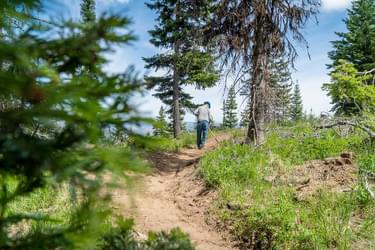About the Recreational Trails Program
Supporting, building, and restoring trails in all States
RTP embraces the “user-pay/user-benefit” philosophy of the Highway Trust Fund, returning federal tax on fuel used for nonhighway recreation to the states for trail projects. Although the tax supporting the Fund is paid only by gas-using vehicles, revenue is available for all recreational trails.
- More than 30,000 recreational trails projects funded since 1993
- $85 million/ yr in funding for trails across all 50 states and DC
- RTP funding covers up to 80% of a project, but there are some exceptions.
- States, local organizations or private donors can provide the remaining balance.
- States administer their grants which range from $200-$1 million, but typically average $10,000-$300,000.
States must use 30% of their funds for motorized trail uses, 30% for nonmotorized trail uses, and 40% for diverse trail uses. Diverse motorized projects (such as snowmobile and motorcycle) or diverse nonmotorized projects (such as pedestrian and equestrian) may satisfy two of these categories at the same time. States are encouraged to consider projects that benefit both motorized and nonmotorized users, such as common trailhead facilities.
Other uses of funds specifically allowed are:
- Development and dissemination of publications and operation of educational programs to promote safety and environmental protection related to trails (including supporting non-law enforcement trail safety and trail use monitoring patrol programs, and providing trail-related training) (limited to 5% of a State's funds).
- State administrative costs related to this program (limited to 7% of a State's funds).
Recreational Trails Program funds MAY be used for:
- Maintenance and restoration of existing trails.
- Development and rehabilitation of trailside and trailhead facilities and trail linkages.
- Purchase and lease of trail construction and maintenance equipment.
- Construction of new trails (with restrictions for new trails on Federal lands).
- Acquisition of easements or property for trails.
- Assessment of trail conditions for accessibility and maintenance.
Recreational Trails Program funds MAY NOT be used for:
- Property condemnation (eminent domain)
- Constructing new trails for motorized use on National Forest or Bureau of Land Management lands unless the project is consistent with resource management plans
- Facilitating motorized access on otherwise nonmotorized trails.

